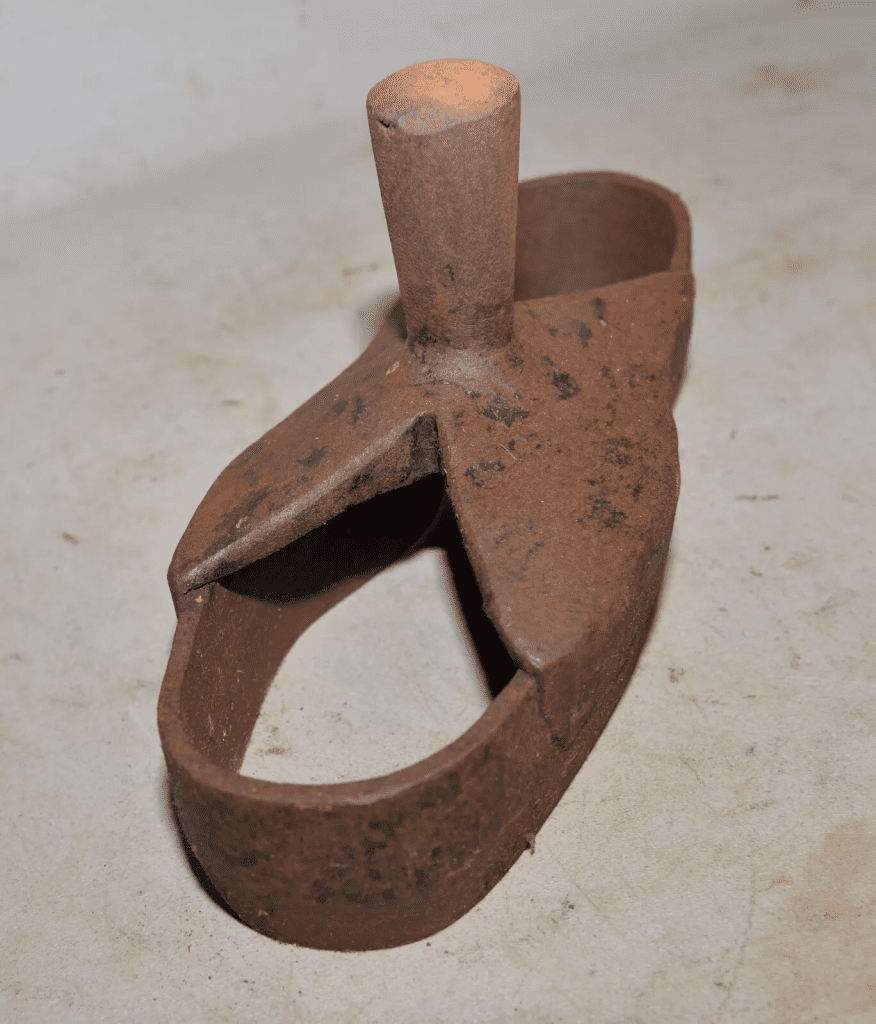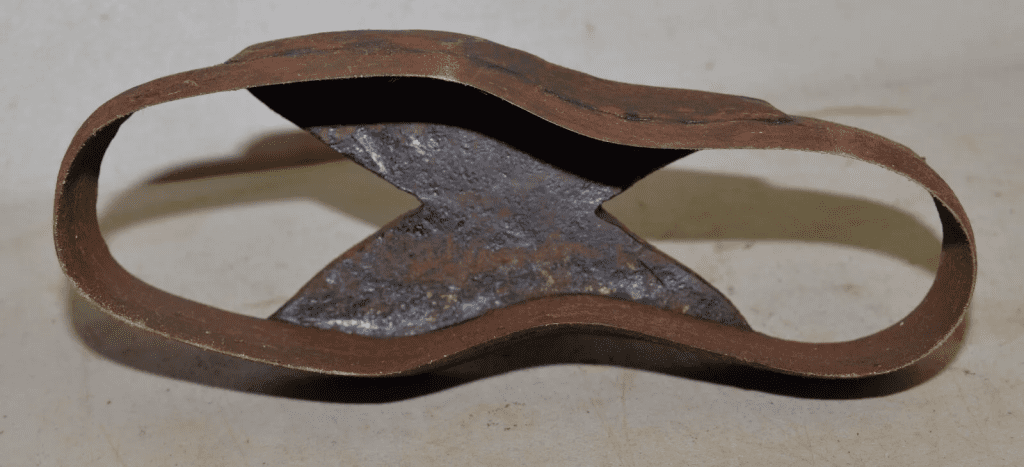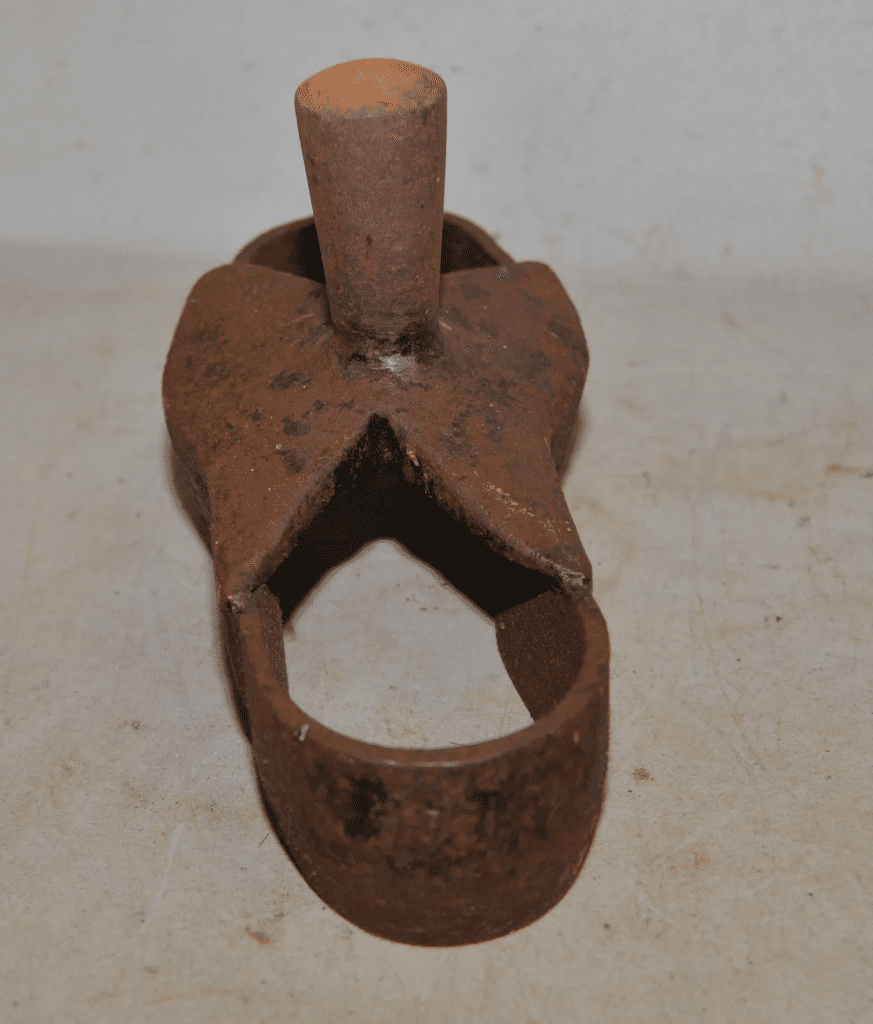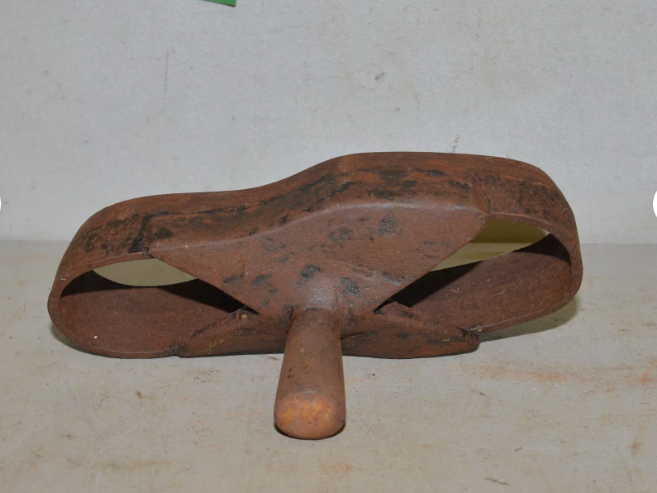The vintage steel shoe sole die cutter stands as a testament to the rich heritage of cobbling and shoemaking, playing a pivotal role in the industry’s evolution. Dating back to the early 19th century, this tool was a cornerstone in traditional shoemaking workshops, allowing cobblers to precisely cut leather into the shape of shoe soles. As handmade shoes were the norm during this era, the die cutter not only streamlined production but also set the stage for the industrial advancements that followed. Let’s explore the history, usage, and lasting legacy of this invaluable tool in the world of craftsmanship.
The Origins of the Steel Shoe Sole Die Cutter

The steel shoe sole die cutter came into prominence during a time when shoemaking was an entirely manual process. In the early 19th century, cobblers relied on their skill and a few basic tools to create shoes that were both durable and custom-made to fit each customer. However, as demand for shoes grew and labor-intensive methods became unsustainable, the need for tools that could increase efficiency without sacrificing quality became apparent.
Enter the steel shoe sole die cutter. This tool allowed cobblers to cut uniform, perfectly shaped soles from leather with speed and precision. Before its invention, cutting shoe soles was a time-consuming task that required meticulous effort to ensure each piece was the right size and shape. The introduction of the die cutter revolutionized the process, enabling cobblers to meet growing demand and increasing the overall production capacity of small workshops.
Usage in Leatherworking: Precision and Efficiency
The steel shoe sole die cutter was designed to make the process of cutting leather into shoe soles easier, faster, and more accurate. The tool consisted of a heavy steel frame that housed a die, or a sharp metal mold, shaped like a shoe sole. To use the die cutter, the cobbler would place a sheet of leather underneath the die, then apply pressure by hand or through a press, forcing the die down onto the leather. The result was a perfectly cut sole, ready to be attached to the upper part of the shoe.
This method not only ensured that each shoe sole was identical in shape and size, but it also saved time and reduced waste. The die cutter allowed cobblers to maximize the use of leather, cutting multiple soles from a single sheet of material with minimal scraps. For craftsmen who prided themselves on their efficiency and precision, the steel shoe sole die cutter was a game-changer.
In addition to leather, the die cutter could also be used with other durable materials like rubber or synthetic fabrics, making it a versatile tool for various types of shoes. Whether crafting boots, dress shoes, or work footwear, the cobbler could rely on the die cutter to produce consistent results every time.
Impact During the Industrial Revolution
The invention and widespread use of the steel shoe sole die cutter coincided with the dawn of the Industrial Revolution, a period marked by rapid advancements in manufacturing and production methods. As industries across the board embraced mechanization, trades like shoemaking were not left behind.
While the die cutter was initially used in small, independent cobbler shops, its ability to improve efficiency and produce uniform results made it a vital tool as shoemaking began to scale up. Factories and larger workshops adopted the die cutter as part of their production lines, marking the transition from purely handmade shoes to a combination of handmade and machine-assisted methods.
The Industrial Revolution saw the introduction of steam-powered machinery and conveyor belt systems, which allowed manufacturers to produce shoes at an unprecedented rate. Although the die cutter was no longer operated solely by hand, its core function remained the same: cutting soles quickly, accurately, and efficiently. In this way, the steel shoe sole die cutter played an integral role in the modernization of the shoemaking industry.

The Design of the Vintage Die Cutter: A Blend of Strength and Simplicity
One of the most striking aspects of the vintage steel shoe sole die cutter is its design. Crafted from sturdy, high-quality steel, the tool was built to withstand repeated use over long periods. The steel frame provided stability and durability, while the sharp metal die ensured clean, precise cuts with every use.
While the design of the die cutter evolved over time to accommodate larger-scale production, the basic concept remained largely unchanged. The combination of simplicity and functionality made the tool indispensable in any shoemaking workshop. Its compact design also meant it could be easily integrated into small spaces, allowing cobblers to maintain efficiency without requiring large, complex machinery.
In the modern world, collectors and enthusiasts of vintage tools marvel at the craftsmanship behind these die cutters. Many have been preserved in excellent condition, a testament to the durability and quality of their construction.
Legacy in Modern Shoemaking and Collecting

While today’s large-scale shoe production relies on advanced machinery and automation, the legacy of the vintage steel shoe sole die cutter endures. Its influence can still be seen in modern shoemaking practices, particularly in smaller, bespoke workshops where traditional craftsmanship is valued. For many, the die cutter represents the art of shoemaking at its finest—a blend of skill, precision, and dedication to quality.
Beyond its practical use, the die cutter has also become a sought-after collectible. Enthusiasts of vintage tools and leatherworking appreciate these devices for their historical significance and craftsmanship. Owning a vintage steel shoe sole die cutter is like owning a piece of history, a tangible reminder of the craftsmanship that shaped the shoemaking industry.
For modern leatherworkers and hobbyists, the die cutter remains a functional tool, often used in handmade shoe projects where quality and precision are paramount. Whether for practical use or as a collector’s item, the vintage steel shoe sole die cutter continues to be revered for its role in the evolution of shoemaking.
The Evolution of Shoemaking: From Handcrafted to Mechanized

The vintage steel shoe sole die cutter stands as a symbol of the broader evolution of shoemaking. It represents the transition from the handcrafted, labor-intensive methods of the past to the more efficient, mechanized processes of the present. The tool itself may be a relic, but its impact is undeniable.
Today, as the demand for fast fashion and mass-produced shoes grows, there is also a renewed appreciation for the art of traditional cobbling. Many shoe enthusiasts seek out bespoke, handmade footwear, valuing the craftsmanship and attention to detail that mass production often lacks. The vintage die cutter is a reminder of the time when each shoe was a unique, carefully crafted product—a stark contrast to today’s conveyor-belt productions.
Conclusion: A Timeless Tool with Enduring Value
The vintage steel shoe sole die cutter was more than just a tool; it was a vital part of the cobbler’s craft, helping to shape the modern shoemaking industry. Its precision, simplicity, and efficiency made it indispensable in both small workshops and larger-scale production facilities. Today, it continues to hold value for collectors, hobbyists, and leatherworking enthusiasts, representing a key chapter in the history of craftsmanship.
As we look back on the evolution of shoemaking, the die cutter stands out as a symbol of ingenuity and progress—a tool that bridged the gap between traditional craftsmanship and modern industrialization. Its legacy lives on, not only in the shoes it helped create but in the appreciation for the skilled tradespeople who used it.




